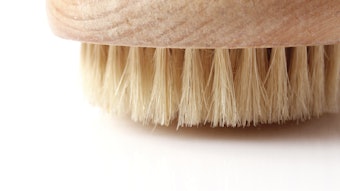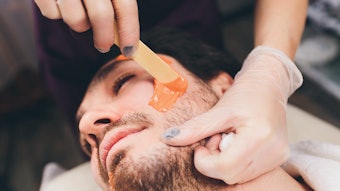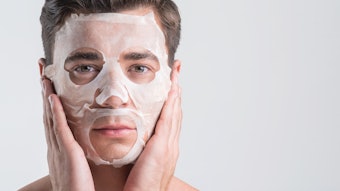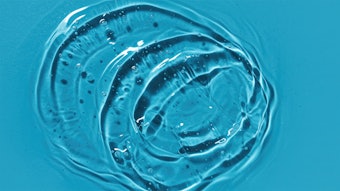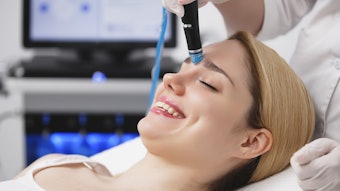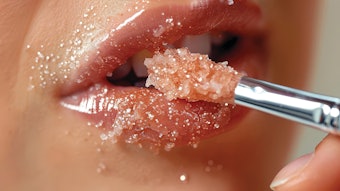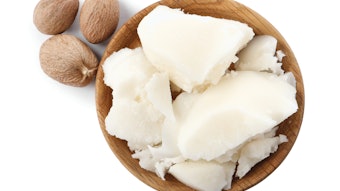
Due to dramatic hormone fluctuations during and after pregnancy, the skin may show some unwanted changes. Skin conditions such as melasma, stretch marks and varicose veins are of the most common issues that clients want treatments for after pregnancy. Proper home care, cosmetic treatments and certain medical procedures can offer significant improvement.
It is important to note that these patients must be seen and cleared by a medical professional before treatment. Many treatments cannot be performed during pregnancy or while breast feeding.
Melasma
Melasma occurs in about 50% of pregnant women and is seen as dense marks of dark brown pigmentation that typically appear in the center of the face, the forehead, the upper lip and the cheeks. Melasma can be caused by several factors including inflammation, sun exposure, genetics, but most commonly they are caused by hormone fluctuations as seen in pregnancy, which gives it the frequently used nickname of “ the pregnancy mask.” It is a difficult condition to keep under control, and it is constantly reoccurring in some.
Sunscreen. First and foremost, it is essential to avoid excess sun exposure at all costs, as even the slightest exposure to the sun can make the pigment worse or retrigger pigment that has already been lightened. The use of broad spectrum sunscreen of at least SPF 30 should become a habit and must be reapplied every hour and a half to two hours when exposed to the sun. Large hats and sunglasses are also recommended for extra protection.
Antioxidants. The daily use of topical antioxidants is critical to combat any free radicals or inflammation that may have made its way through the sun-protected skin. Vitamin C in the form of L-ascorbic acid has skin lightening properties as well as being a potent antioxidant. Clients must be educated in the importance of using a stable form of vitamin C from a reputable company to ensure efficacy.
Lighteners. There are several topical skin lightening agents that are used with great success on skin with melasma. Hydroquinone is the most commonly known and studied, although there is some controversy regarding the use of this product. Other ingredients for lightening include kojic acid, arbutin, phytic acid, emblica and licorice root. These products must be used consistently in combination with antioxidants and sunscreen to see improvement.
Exfoliants. Chemical exfoliation treatments tend to be the go-to for in-office treatments. Chemical exfoliants speed cellular turnover, eventually ridding the skin of already pigmented cells. There are several levels of peeling available from very superficial performed by estheticians to medium depth done by medical professionals. This variety makes it easier to get safe, consistent results without aggressively over-treating the skin.
Light therapy. Laser and light therapy treatments may be used with caution as well. There is some concern that light based treatments could create more inflammation, triggering more pigment in the long run.
Stretch Marks
Stretch marks appear most commonly on the breasts, belly, hips and buttocks and are one of the biggest appearance concerns regarding skin changes during pregnancy. Stretch marks are similar to scars, as they occur from the breakdown of proteins in the skin. These marks usually start off colored with red or purple tones. Darker skin types may look more brown. Over time, these marks become lighter, turning white or almost silver.
Prior to any recommendations for stretch mark reduction, it is important that the patient know that results vary. As with all treatments and conditions, some respond well and others may see only minor results. There are several factors that play a role in how the skin will respond including the severity of stretch marks and how long they have been there.
Moisturize. Since stretch marks are similar to scars, it is important to continually moisturize to prevent collagen breakdown from excessive pulling. The softer the skin, the easier it stretches. There is not much evidence as to one product in particular, but injured skin heals better in a moist environment.
Vitamin A. Vitamin A-based products are known for their effective results on treating imperfections on the face. Known as skin normalizers, these products can help the skin return to a normal state over time. Results are cumulative, and sun protection should be used continually.
Microneedling. Microneedling is a procedure using needles on rollers or with an automated device at varying depths to stimulate collagen growth. Cosmetic rolling can be done by the esthetician or the client to help penetrate product into the skin. Most commonly, clients seek treatments performed by medical professionals that use deeper needling to break down abnormal tissue to stimulate the growth of healthy skin.
Lasers. Resurfacing lasers are used in a similar way to medical needling, except for using heat to trigger a wound response as opposed to the use of needles.
Varicose Veins
During pregnancy, the body is trying to compensate for two bodies as opposed to one. The extra pressure on the legs from weight and gravity doesn’t help either. Some people that get varicose veins during pregnancy are lucky enough to have them disappear shortly after giving birth; others may need to seek treatment.
There are some precautions that can be taken during pregnancy to reduce the risks of getting these troublesome lesions by keeping the blood flowing. This could be simply making efforts to exercise and moving around to promote circulation. Support stockings can also be helpful.
Lasers. Laser treatments seem to be the best option for veins that are not raised or bulging. A medical professional will typically use a light based device that is attracted to oxyhemoglobin in vascular lesions. Treatments are usually quick, depending on the size and number of lesions being treated. Patients feel a slight pinch or hot spot like a rubber band snapping. These vascular lesions may disappear during treatment or become darker and turn to a grey color. In a couple of days, the lesions often disappear but it may take several treatments.
Sclerotherapy. Schlerotherapy is another medical procedure that involves the injection of a salt-based solution directly into the vein, ultimately causing the blood to clot. Eventually, the lesions disappear and fade over time. The procedure itself takes approximately 15-30 minutes to perform. Inflammation and bruising may be present after the procedure, but there is little downtime. Patients often see results within a week.

